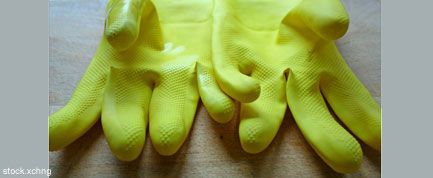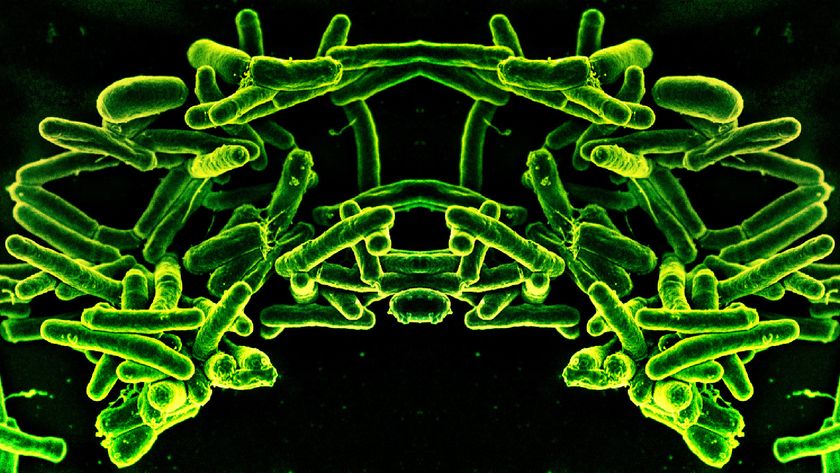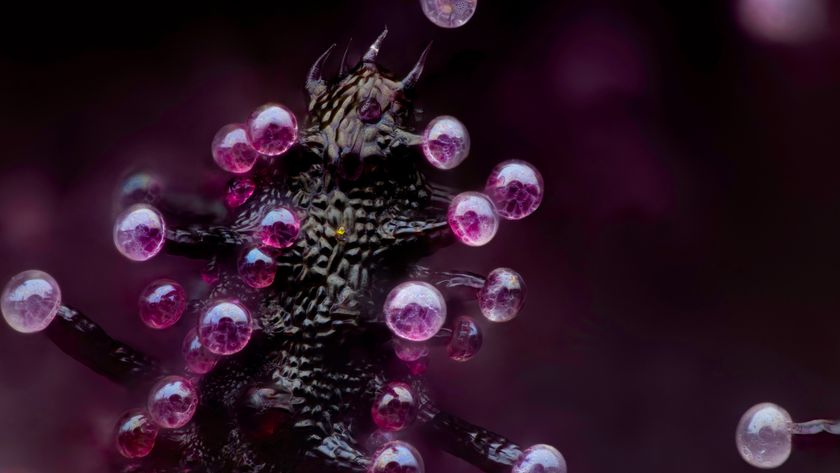The Truth About 'Green' Cleaning Products

When the bathroom starts to look grubby and you pull out all the conventional brushes, sponges, sprays and bleach and start scrubbing, you expose yourself to hundreds of chemicals that have known, and possibly unknown, toxic effects.
"Green" cleaning products claim to offer safer alternatives for humans and the planet, but at a higher price. So what's an environmentally conscious germophobe to do?
When it comes to humans, the use of any one cleaning product—green or conventional—in small amounts and with proper ventilation probably won't make you ill, says Tom Natan, a chemical engineer with the non-profit National Environmental Trust.
The problem is that most people use more than one cleaning product for the bathroom—there is one for the toilet, one for the mirror, perhaps one for surfaces, another to clean mildew from tiles and then tons of other "specialized" cleaning product options. The repeated exposures to the chemicals in all of these products can add up, Natan said.
"We are exposed, in the process of cleaning our homes, to more than the manufacturers projected," Natan said. "You get the sum total together, and you've got to wonder, why are you using these things?"
And that's just the story for humans. Factor in the overall planet's health, and it gets murkier.
'Dirty' cleaning ingredients
Sign up for the Live Science daily newsletter now
Get the world’s most fascinating discoveries delivered straight to your inbox.
Certain chemicals commonly found in conventional cleaning products present known or suspected problems for the people that use them and the environment once washed down the drain.
Volatile organic compounds, used to enhance the performance of a product, can impair neurological functions, while other chemicals can act as respiratory irritants, carcinogens or reproductive toxins, depending upon the extent of exposure, according to the National Environmental Trust and other environmental groups.
Phosphates can cause the eutrophication of rivers and other bodies of water, which can deplete them of oxygen and decrease water quality.
There is little regulation of cleaning chemicals, and there are virtually no labeling requirements to let people know what they are exposing themselves and the planet to.
Companies select ingredients for cleaning products to enhance their performance, but "a lot of the chemicals, we simply don't know anything about," Natan said.
For example, phthalates, which are suspected to have adverse hormonal effects, help distribute dyes and fragrances and act as plasticizers. Other chemicals are used to keep a product stable on the shelf, while others, such as glycols, act like anti-freeze. Still other chemicals could simply be impurities left over from the manufacturing process.
With some 80,000 chemicals in common use, there are still some that could have as-yet unknown toxic effects.
Mark Walton, of Dow Chemical Co., which makes some of the chemicals, such as glycols, that go into cleaning products said, "Dow tries to do a thorough job of testing the chemicals that we produce and sell."
S.C. Johnson, maker of various cleaning products, did not reply to a request for comment on the health and environmental issues related to its products.
However, there is not enough information on the health effects of the chemicals used in green products to know whether they are truly better for the health of humans, Natan said.
"I think as a general rule, people who are avoiding these very toxic chemicals are going to be healthier," he said.
Given the lack of firm data and reliable studies on many chemicals, however, the choice between conventional and green cleaning products may for many people be based on politics and sentiments more than health.
'Green' cleaners
In response to these issues of uncertain exposures, companies such as Method and Seventh Generation say they take care to exclude chemicals with known or suspected toxicities.
Method has a "dirty list" of chemicals it refuses to use in its products. Seventh Generation restricts many of the same products but, with the exception of phosphates and chlorine, does not have a specific "banned chemicals" list.
According to Martin Wolf, director of product and environmental technology for Seventh Generation, company guidelines specify that ingredients in their products cannot be toxic to the user either immediately or when used over time and that they cannot contribute to environmental problems such as global warming, ozone layer depletion, aquatic toxicity or air pollution.
Both companies also list all the ingredients they use on their labels. "We want people to know what's in it," said Nick Mahan, Method's director of formulations.
And Dow is currently working toward making safety assessments of its products publicly available by 2015, and it has begun making some resins from ethanol instead of petroleum in Brazil, where ethanol is widely used.
Dow's Walton says that this effort to more sustainable chemicals is "indicative of the kind of thing that you will see, where it makes sense."
Should you go green?
Though their ingredients may be more environmentally friendly, green cleaners come with some trade-offs: They're more expensive and may require more elbow grease to achieve the same level of visual cleanliness.
Method and Seventh Generation are working on the performance of their products to bring them up to par, with considerable success, they say. Both companies test their products against top-rated conventional brands to make sure they clean comparably.
"We're not going to ask the consumer to make a trade-off in terms of performance results to be green," said Method's Mahan.
The only conventional cleansers that green products can't completely match in terms of strength are those that contain chlorine, such as bleach. In those cases, the green cleaners take a little more scrubbing but can get the job done, Mahan said.
The kicker: You don't really need any chemicals to clean, said Natan, of the National Environmental Trust. "These chemicals make cleaning easier, but they don't make cleaning any better."
The largely American tendency toward germophobia has partly been fueled by advertising that promotes disinfecting cleaners that eradicate all bacteria in sight as the best way to protect your family from germs. But you don't really need to kill the bacteria, you just need to get them off your table, Natan said.
In fact, disinfectants could do more harm than good to humans. Natan's group tested one popular disinfectant spray and found that it contained a chemical known to damage the reproductive systems in the offspring of pregnant rats, even in small amounts.
To clean your house, all you really need is some baking soda and vinegar, Natan said, adding that it's what he uses himself. (For instance, a little vinegar rubbed onto glass with a wad of crumpled newsprint will give you a streak-free shine on window panes. No glass-specific cleanser needed.)
"Those things work remarkably well," Natan said, though they may require a little extra effort and won't leave your house smelling like lavender or a pine forest.
- 10 Ways to Green Your Home
- Top 10 Emerging Environmental Technologies
- What's Your Environmental Footprint?

Andrea Thompson is an associate editor at Scientific American, where she covers sustainability, energy and the environment. Prior to that, she was a senior writer covering climate science at Climate Central and a reporter and editor at Live Science, where she primarily covered Earth science and the environment. She holds a graduate degree in science health and environmental reporting from New York University, as well as a bachelor of science and and masters of science in atmospheric chemistry from the Georgia Institute of Technology.











